Ispaghol Ka Chilka: Complete Guide to Benefits, Uses, and Quality Selection
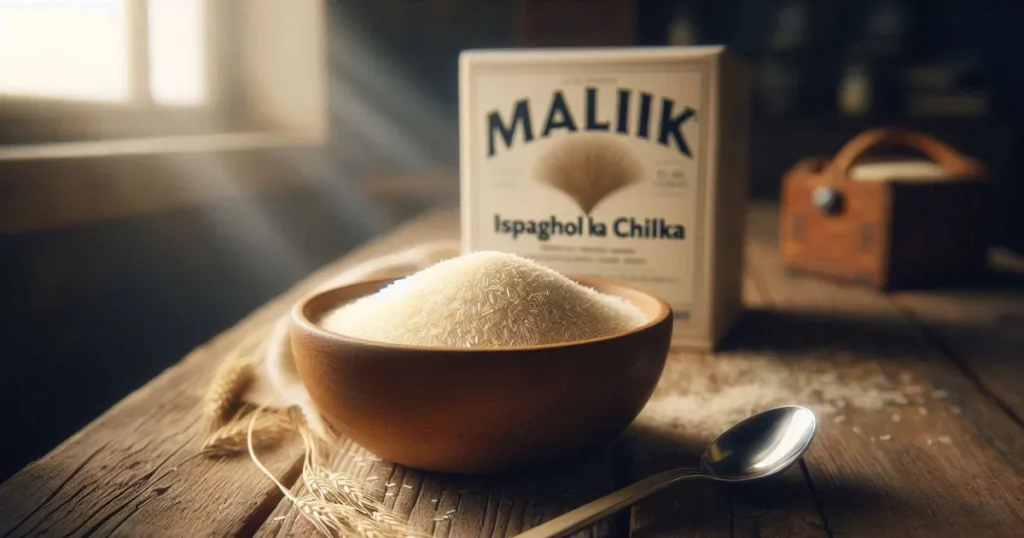
When I first started growing psyllium in the fertile lands of Pakistan decades ago, I never imagined how ispaghol ka chilka would transform the health and wellness of millions worldwide. This golden-brown husk, harvested from the Plantago ovata plant, has been a cornerstone of traditional medicine for centuries – and today, modern science continues to validate what our ancestors knew all along.
What exactly is ispaghol ka chilka? Simply put, it’s the outer coating of the isabgol seed, carefully separated and processed to create one of nature’s most powerful dietary fibers. But calling it “just fiber” would be like calling the ocean “just water” – there’s so much more beneath the surface.
In this comprehensive guide, I’ll share everything I’ve learned through decades of cultivation, processing, and working directly with thousands of customers. Whether you’re dealing with digestive issues, looking to manage your weight naturally, or want to understand why ispaghol ka chilka has stood the test of time, you’re in the right place. Let me walk you through the science, the practical applications, and the insider knowledge that only comes from years of hands-on experience.
What Is Ispaghol Ka Chilka? The Basics Explained
Let me start by clarifying something important: ispaghol ka chilka is the Urdu/Hindi term for what’s internationally known as psyllium husk. “Chilka” means husk or outer shell, and “ispaghol” refers to the plant itself. When you hear people talk about isabgol husk, psyllium fiber, or ispaghula husk, they’re all referring to the same remarkable natural product.

The Plant Behind the Husk
Ispaghol ka chilka comes from Plantago ovata, a plant that requires very specific growing conditions to thrive. In Pakistan, particularly in regions with the right combination of soil quality, temperature fluctuations, and water availability, we’ve perfected the art of cultivating this plant. The white or pinkish flowers eventually produce small seeds, each coated with a thin, mucilaginous layer – this is the chilka we harvest.
Here’s what makes our Pakistani ispaghol ka chilka exceptional: the climate and soil composition create husks with higher mucilage content, which translates to better fiber quality and more effective health benefits. I’ve seen plantations across different regions, and I can tell you that the terroir matters just as much for psyllium as it does for wine.
How We Process Ispaghol Ka Chilka
The journey from plant to product is meticulous. After the seeds mature, we harvest them at precisely the right time – too early and the chilka lacks potency, too late and we lose quality. The seeds are then dried under controlled conditions before the separation process begins.
Using specialized machinery, we separate the chilka from the seed kernel. This is where expertise matters tremendously. At Malik Psyllium, we’ve refined this process to ensure maximum purity while preserving the natural properties of the husk. The final product is a fine, pale-colored powder or flaky substance that expands dramatically when mixed with liquid.
What Makes It Different from Other Fibers
Why ispaghol ka chilka stands out when there are countless fiber supplements available? Here’s the truth: most commercial fibers are either synthetic, single-source, or heavily processed. Ispaghol ka chilka is unique because it contains both soluble and insoluble fiber in ideal proportions – approximately 70% soluble and 30% insoluble.
The soluble fiber becomes gel-like when wet, which is what gives it the power to improve digestion, lower cholesterol, and regulate blood sugar. The insoluble fiber adds bulk and promotes regularity. This dual-action mechanism is something synthetic fibers can not replicate.
The Remarkable Health Benefits of Ispaghol Ka Chilka
In my years working with ispaghol ka chilka, I’ve documented countless success stories. Let me share the benefits that both scientific research and real-world experience have confirmed.
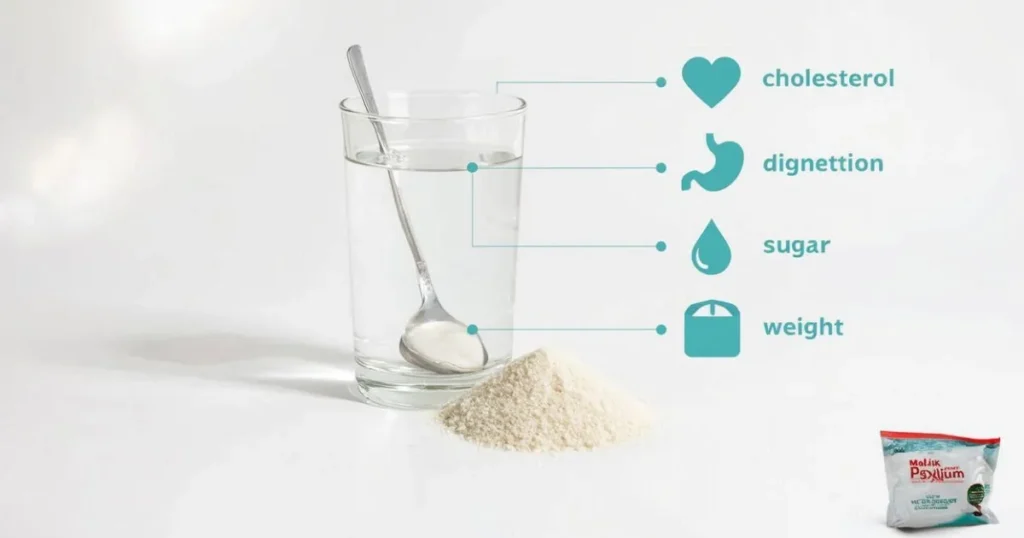
Digestive Health and Regularity
This is where ispaghol ka chilka truly shines. The fiber absorbs water in your intestines – up to 10 times its weight – creating soft, bulky stools that pass easily. Unlike harsh chemical laxatives, it works with your body’s natural rhythms, not against them.
I’ve had customers tell me they’ve struggled with chronic constipation for years, trying everything from medications to extreme diets. Within days of starting ispaghol ka chilka with proper hydration, they experienced relief. The key is consistency and patience – this isn’t a quick fix but a natural solution that improves over time.
Cholesterol Management
Here’s something that surprises many people: ispaghol ka chilka can lower LDL cholesterol levels by 5-10% when used regularly. The soluble fiber binds to bile acids in your digestive system, forcing your liver to use cholesterol to make more bile. This process effectively removes cholesterol from your bloodstream.
Several studies have confirmed this effect, and I’ve personally seen lab reports from customers whose cholesterol numbers improved significantly after three months of consistent use. For those managing heart health, this natural approach offers a valuable complement to other lifestyle changes.
Blood Sugar Control
For individuals with diabetes or prediabetes, ispaghol ka chilka offers remarkable benefits. The gel-forming fiber slows down the digestion of carbohydrates, preventing the sharp blood sugar spikes that occur after meals. This means more stable energy throughout the day and better long-term glucose control.
I always recommend that people with diabetes consult their healthcare provider before starting, because as blood sugar improves, medication dosages may need adjustment. That’s how effective this natural fiber can be.
Weight Management Support
Let me be honest: ispaghol ka chilka isn’t a magic weight-loss pill. However, it’s an incredibly effective tool when combined with healthy eating and regular exercise. When you take it 20-30 minutes before meals with plenty of water, it expands in your stomach, creating a sensation of fullness.
This natural appetite suppression helps you eat smaller portions without feeling deprived. Over time, this translates to reduced calorie intake and gradual, sustainable weight loss. I’ve seen people lose 5-10 kilograms over several months simply by incorporating ispaghol ka chilka into their routine and making modest dietary improvements.
Detoxification and Colon Health
As ispaghol ka chilka moves through your digestive tract, it acts like a gentle broom, collecting toxins, undigested food particles, and waste materials. This cleansing action supports overall colon health and may reduce the risk of digestive disorders.
Think of it as regular maintenance for your digestive system. Just as you clean your home to prevent problems, ispaghol ka chilka helps keep your intestines clean and functioning optimally.
Heart Health Beyond Cholesterol
The benefits for cardiovascular health extend beyond cholesterol reduction. By reducing inflammation and improving overall metabolic health, ispaghol ka chilka contributes to better heart function. The fiber also helps regulate blood pressure in some individuals, though this effect is generally modest.
Gut Microbiome Enhancement
Recent research has revealed that ispaghol ka chilka acts as a prebiotic, feeding beneficial gut bacteria. A healthy microbiome affects everything from immunity to mood, making this one of the most underappreciated benefits of regular use.
Quick Benefits Overview:
| Health Area | How Ispaghol Ka Chilka Helps | Timeline for Results |
| Constipation | Softens stool, adds bulk | 12-72 hours |
| Cholesterol | Binds bile acids, reduces LDL | 4-12 weeks |
| Blood Sugar | Slows carb absorption | 1-4 weeks |
| Weight Loss | Creates fullness, reduces intake | 4-12 weeks |
| Digestion | Improves regularity, reduces bloating | 1-2 weeks |
| Colon Health | Cleanses, supports microbiome | Ongoing |
How to Use Ispaghol Ka Chilka Properly
The effectiveness of ispaghol ka chilka depends heavily on proper usage. Over the years, I’ve learned that many people don’t get results simply because they’re not using it correctly. Let me share the methods that work.
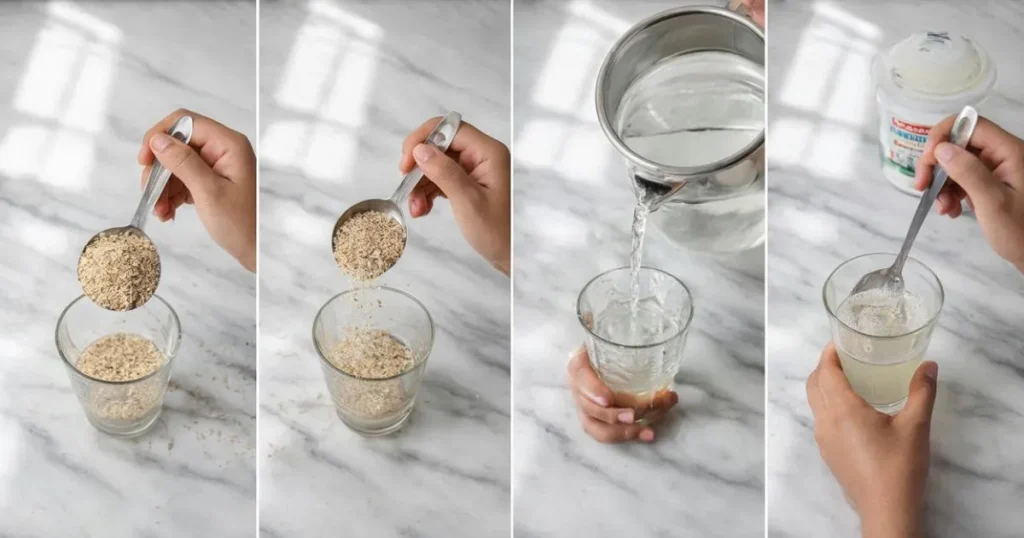
The Standard Water Method
This is the traditional approach, and it remains the most effective for general digestive health.
Instructions:
- Add 1-2 teaspoons of ispaghol ka chilka to a glass (250ml) of room temperature or cold water
- Stir quickly and drink immediately – it thickens within seconds
- Follow immediately with another glass of plain water
- Wait at least 30 minutes before eating
Best timing: First thing in the morning on an empty stomach, or before bed for overnight action.
My tip: Never let it sit. The longer you wait, the thicker it becomes, making it difficult to drink. Mix and consume within 30 seconds.
With Milk or Yogurt
For those who find the texture of ispaghol ka chilka in water unpleasant, mixing with milk or yogurt provides a more palatable option.
Instructions:
- Mix 1 teaspoon into 200ml of lukewarm milk or 150g of fresh yogurt
- Stir thoroughly to avoid lumps
- Consume immediately
- Drink additional water throughout the day
Best for: Nighttime use for constipation relief. The combination of fiber and probiotics (in yogurt) or calcium (in milk) enhances digestive benefits.
In Smoothies and Juices
This is my recommended method for people focused on weight management or those who want to mask the texture entirely.
Instructions:
- Prepare your smoothie or fresh juice as usual
- Add 1 teaspoon of ispaghol ka chilka
- Blend for just 5-10 seconds (over-blending makes it too thick).
- Drink immediately.
Benefits: The natural sugars and flavors make it more enjoyable, while the fiber helps slow sugar absorption.
With Food.
Some people sprinkle ispaghol ka chilka directly onto food – mixed into oatmeal, stirred into soup, or added to dal (lentils). While this works, I generally don’t recommend it as your primary method because you need significant liquid for the fiber to work properly.
Dosage Guidelines.
Beginners:
Start with 1 teaspoon (5g) once daily for the first week. This allows your digestive system to adjust gradually.
Standard dose:
After one week, increase to 1 teaspoon twice daily – once in the morning and once at night.
Maximum safe dose:
Don’t exceed 3 tablespoons (30g) per day without medical supervision.
Critical rule:
For every teaspoon of ispaghol ka chilka, drink at least 250ml of water immediately, plus 6-8 additional glasses throughout the day.
Ispaghol Ka Chilka vs Other Fiber Sources: A Honest Comparison.
People often ask me how ispaghol ka chilka compares to other fiber options. Here’s my honest assessment based on years of observation and customer feedback.
Ispaghol Ka Chilka vs Chia Seeds.
Chia seeds are popular, and they do offer fiber, but there are key differences:
Fiber content:
Ispaghol ka chilka contains about 70% fiber by weight, while chia seeds contain approximately 35%. You’d need to consume twice as many chia seeds to get equivalent fiber.
Calorie consideration:
Chia seeds are calorie-dense (about 140 calories per ounce) because they contain fats and proteins. Ispaghol ka chilka has minimal calories – about 35 calories per tablespoon.
Action speed:
Ispaghol ka chilka works faster for constipation relief, typically within 12-24 hours. Chia seeds may take longer.
Best use case:
Chia seeds are excellent for adding nutrition to meals. Ispaghol ka chilka is superior specifically for digestive health and cholesterol management.
Ispaghol Ka Chilka vs Flaxseed.
Flaxseeds offer omega-3 fatty acids along with fiber, but again, there are trade-offs:
Fiber type:
Flaxseed contains more insoluble fiber, while ispaghol ka chilka has more soluble fiber. For cholesterol and blood sugar control, the soluble fiber in chilka is more effective.
Absorption:
You must grind flaxseeds for your body to absorb the nutrients. Ispaghol ka chilka works effectively without any preparation.
Shelf life:
Ground flaxseed can go rancid quickly due to its oil content. Ispaghol ka chilka remains stable for years when stored properly.
Ispaghol Ka Chilka vs Commercial Fiber Supplements.
This comparison reveals why I’m so passionate about natural ispaghol ka chilka:
Ingredient list:
Most commercial supplements contain added sugars, artificial flavors, colors, and preservatives. Pure ispaghol ka chilka is simply the husk – nothing added, nothing removed.
Cost effectiveness:
Gram for gram, ispaghol ka chilka is often more affordable than branded fiber supplements, especially when purchased from direct sources like Malik Psyllium.
Efficacy:
Synthetic fibers can not replicate the dual soluble-insoluble fiber profile of ispaghol ka chilka. Nature got it right.
Side effects:
Commercial supplements often cause more bloating and gas due to added ingredients. Pure chilka, when taken with adequate water, is generally better tolerated.
Ispaghol Ka Chilka vs Oat Fiber.
Oats are undeniably healthy, but for concentrated fiber benefits, ispaghol ka chilka wins:
Concentration:
You’d need to eat a large bowl of oatmeal to get the same fiber as 1-2 teaspoons of ispaghol ka chilka.
Cholesterol impact:
Both lower cholesterol, but ispaghol ka chilka shows more significant effects in clinical studies.
Convenience:
Not everyone wants to eat oatmeal daily. Ispaghol ka chilka takes 30 seconds to consume.
Comparison Table:
| Fiber Source | Fiber per Serving | Calories | Soluble Fiber | Best For |
| Ispaghol Ka Chilka | 7g (2 tsp) | 36 | High (70%) | Digestion, cholesterol, blood sugar |
| Chia Seeds | 10g (1 oz) | 140 | Medium (30%) | Nutrition, energy |
| Flaxseed | 8g (1 oz) | 150 | Medium (40%) | Omega-3s, hormones |
| Oat Bran | 6g (1 cup) | 88 | Medium (50%) | Heart health, satiety |
| Commercial Fiber | 3-5g | 20-60 | Varies | Convenience |
Quality Matters: How to Choose the Best Ispaghol Ka Chilka.
Not all ispaghol ka chilka is created equal. In my years in this industry, I’ve seen dramatic quality variations that directly impact effectiveness. Here’s what you need to know.
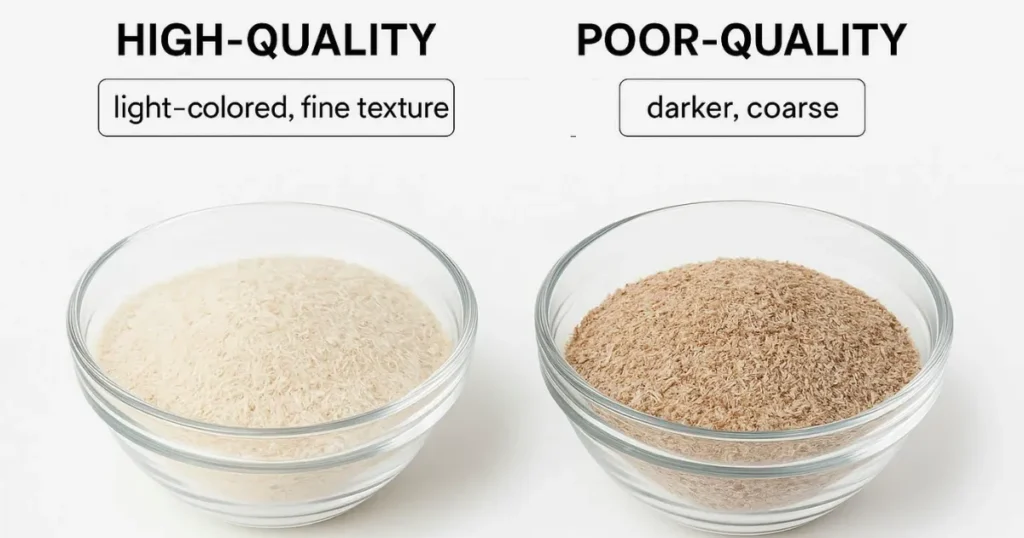
Color and Texture Indicators.
High-quality chilka:
Pale cream to light brown color, fine and fluffy texture, minimal dark specks or impurities.
Poor-quality chilka:
Dark brown or uneven coloring, coarse texture, visible seed particles or debris.
When you hold quality ispaghol ka chilka between your fingers, it should feel light and powdery, not gritty or heavy. The color tells you about processing methods – overly dark chilka may have been exposed to excessive heat, damaging its beneficial properties.
Expansion Test.
Here’s a simple test I teach everyone: Mix one teaspoon of ispaghol ka chilka with water and observe. High-quality chilka should:
- Begin swelling within 30 seconds.
- Form a gel-like consistency within 2-3 minutes.
- Expand to at least 8-10 times its original volume.
If it doesn’t expand significantly or takes much longer, the quality is questionable.
Purity Standards.
The best ispaghol ka chilka should be 95-99% pure husk with minimal contamination. At Malik Psyllium, we test every batch for:
- Heavy metal content.
- Microbial contamination.
- Seed content percentage.
- Moisture levels.
- Fiber concentration.
Look for suppliers who can provide lab certificates. If they can’t or won’t, that’s a red flag.
Origin and Processing.
Pakistan and India are the primary producers of ispaghol ka chilka, with Pakistan generally producing higher mucilage content due to ideal growing conditions. However, origin alone doesn’t guarantee quality – processing methods matter enormously.
What to look for:
- Mechanical separation (not chemical).
- No added substances or fillers.
- Proper drying methods (sun-dried or low-temperature controlled).
- Clean, modern processing facilities.
Packaging and Storage.
Quality ispaghol ka chilka should come in moisture-proof packaging. Once opened, it should be stored in an airtight container in a cool, dry place. Exposure to humidity can cause clumping and reduce effectiveness.
Shelf life indicators:
- Fresh chilka has a mild, neutral smell.
- Old or compromised chilka may smell musty or stale.
- Clumping indicates moisture exposure.
- Color darkening suggests oxidation.
Red Flags to Avoid.
Suspiciously low prices:
If it seems too cheap, it contains fillers or is old stock.
No source information:
Reputable suppliers clearly state origin and processing details.
Added ingredients:
Some products add flavors, sweeteners, or “digestive enzymes.” Pure ispaghol ka chilka needs nothing added.
Unclear labeling:
Vague terms like “fiber blend” or “psyllium complex” often mean the product isn’t pure chilka.
Common Mistakes and How to Avoid Them.
Over the years, I’ve noticed patterns in how people misuse ispaghol ka chilka, preventing them from experiencing its full benefits. Let me help you avoid these pitfalls.
Mistake # 1: Not Drinking Enough Water.
This is by far the most common error. I can not emphasize this enough: ispaghol ka chilka requires substantial water to work properly. Without adequate hydration, it can cause constipation rather than relieving it, or even lead to intestinal blockages in severe cases.
The solution:
Follow this rule religiously, for every teaspoon of chilka, drink at least 250ml of water immediately, then consume an additional 6-8 glasses throughout the day. Set reminders if necessary.
Mistake # 2: Taking Too Much Too Soon.
Eager for results, many people start with large doses. This overwhelms the digestive system, causing bloating, gas, and discomfort that makes them quit entirely.
The solution:
Start with just 1 teaspoon daily for one week. Let your body adjust. Then gradually increase. Patience yields better long-term results than aggressive dosing.
Mistake # 3: Inconsistent Timing.
Taking ispaghol ka chilka randomly – sometimes morning, sometimes night, sometimes skipping days – prevents your body from establishing a digestive rhythm.
The solution:
Choose specific times and stick to them. Most people find success with a morning dose (30 minutes before breakfast) and an evening dose (2 hours after dinner or before bed).
Mistake # 4: Mixing with Medications.
Ispaghol ka chilka can interfere with the absorption of certain medications if taken simultaneously.
The solution:
Take medications at least 2 hours before or 4 hours after your ispaghol ka chilka dose. Always inform your doctor if you’re using it regularly, especially if you take diabetes or heart medications.
Mistake # 5: Expecting Overnight Miracles.
Some people try ispaghol ka chilka for two days, see no dramatic change, and quit. Natural remedies work differently from medications.
The solution:
Commit to at least 2-4 weeks of consistent use before evaluating results. Digestive improvements, cholesterol changes, and weight management all take time.
Mistake # 6: Ignoring Quality.
Buying the cheapest available option often means compromised quality that delivers poor results.
The solution:
Invest in high-quality, pure ispaghol ka chilka from reputable sources. The difference in effectiveness justifies any price difference.
Mistake # 7: Not Adjusting Diet.
Some people continue eating poorly, thinking that ispaghol ka chilka will compensate. While it helps, it’s not magic.
The solution:
Use ispaghol ka chilka as part of a broader healthy lifestyle. It amplifies the benefits of good nutrition and exercise, but can’t replace them.
Side Effects, Safety, and Precautions.
I believe in transparency. While ispaghol ka chilka is remarkably safe for most people, there are potential side effects and situations requiring caution.
Common, Mild Side Effects.
Bloating and Gas:
Especially during the first week, you might experience increased gas production. This happens as your gut bacteria adjust to the increased fiber. It typically resolves within 7-10 days.
Stomach Cramping:
Mild cramps can occur, usually indicating either insufficient water intake or too much chilka too soon. Reduce your dose and increase water consumption.
Frequent Urination:
You’re drinking more water, so yes, you’ll visit the bathroom more often. This is normal and healthy.
Rare but Serious Concerns.
Allergic Reactions:
Though uncommon, some people are allergic to psyllium. Symptoms include itching, rash, difficulty breathing, or swelling. If these occur, stop immediately and seek medical attention.
Intestinal Obstruction:
This is extremely rare but can happen if you take large amounts without adequate water, especially if you have pre-existing intestinal narrowing. Always follow proper usage guidelines.
Choking Hazard:
Never take ispaghol ka chilka in dry powder form. Always mix with liquid first.
Who Should Avoid or Use Caution.
Pregnant and breastfeeding women:
While generally considered safe, consult your doctor before starting any new supplement.
People with swallowing difficulties:
The expanding nature of chilka makes it risky for those with dysphagia.
Those with intestinal conditions:
If you have inflammatory bowel disease, Crohn’s disease, or intestinal strictures, get medical clearance first.
Pre-surgery patients:
Stop taking ispaghol ka chilka at least 2 weeks before scheduled surgery, as it can affect blood sugar levels during and after procedures.
Children under 6:
Pediatric use should be supervised by a healthcare provider.
Drug Interactions.
Ispaghol ka chilka may affect the absorption of:
- Diabetes medications (may enhance effects).
- Blood thinners (may increase bleeding risk).
- Cholesterol medications (may enhance effects).
- Carbamazepine (seizure medication).
- Lithium (psychiatric medication).
Always separate your chilka dose from medications by at least 2-4 hours and inform your healthcare provider of your use.
Safe Usage Guidelines.
- Start with small amounts.
- Drink plenty of water.
- Take at consistent times.
- Monitor your body’s response.
- Adjust as needed.
- Store properly in airtight containers.
- Check expiration dates.
- Source from reputable suppliers.
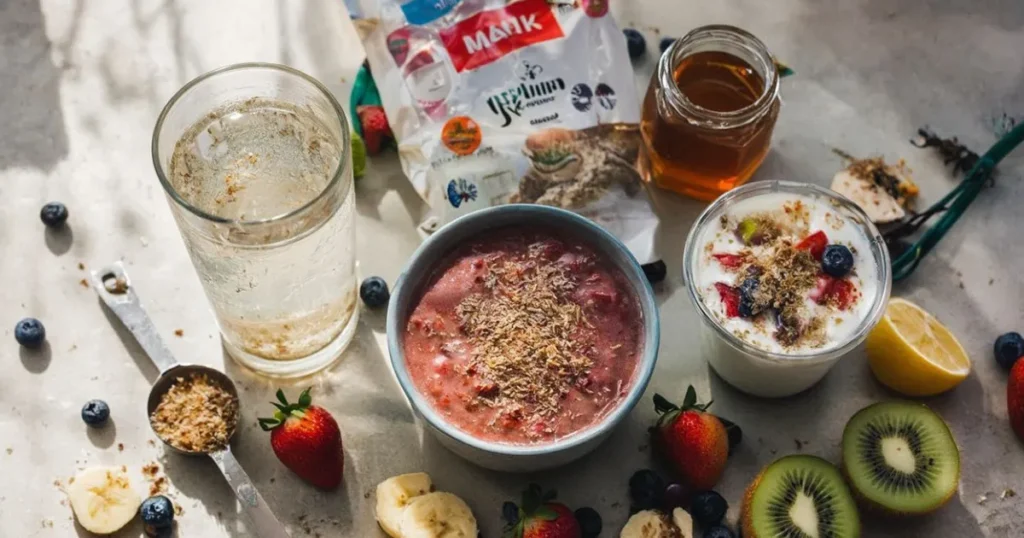
What is ispaghol ka chilka used for?
Ispaghol ka chilka is primarily used to improve digestive health, relieve constipation, and add natural fiber to the diet. It’s also effective for managing cholesterol levels, controlling blood sugar in people with diabetes, supporting weight loss efforts, and promoting overall colon health. In traditional medicine, it’s been used for centuries as a gentle digestive remedy. I’ve seen it help with everything from irregular bowel movements to managing irritable bowel syndrome symptoms.
How much ispaghol ka chilka should I take daily?
For adults, I recommend starting with 1 teaspoon (5g) once daily for the first week to allow your digestive system to adjust. After that, you can increase to 1-2 teaspoons twice daily – once in the morning and once before bed. The maximum safe dose is generally 3 tablespoons (30g) per day, but most people don’t need that much. Always drink at least 250ml of water with each dose and 6-8 glasses throughout the day.
Can ispaghol ka chilka help with weight loss?
Yes, ispaghol ka chilka can support weight loss when combined with a healthy diet and exercise. The soluble fiber expands in your stomach, creating a feeling of fullness that helps reduce overall calorie intake. Take it 20-30 minutes before meals with plenty of water. However, it’s not a miracle solution – think of it as a helpful tool that makes it easier to eat less without feeling hungry. Most people see gradual, sustainable results over 8-12 weeks.
What’s the difference between ispaghol ka chilka and isabgol powder?
Ispaghol ka chilka refers specifically to the husk – the outer coating of the seed. Isabgol powder can mean either finely ground husk or, in some cases, a product that includes ground seeds along with the husk. Pure chilka (husk) is more effective and has higher fiber content. When buying, look for products that specifically state “pure husk” or “100% chilka” to ensure you’re getting the right product.
Is it safe to take ispaghol ka chilka every day?
Yes, for most people, daily use of ispaghol ka chilka is safe and beneficial. Unlike stimulant laxatives, it doesn’t cause dependency or lose effectiveness over time. Many people in South Asia have used it daily for decades without issues. That said, I recommend taking occasional breaks – one week every 3-4 months – to allow your digestive system to maintain its natural rhythm. Always ensure you’re drinking adequate water with daily use.
Can diabetics use ispaghol ka chilka?
Ispaghol ka chilka can be particularly beneficial for people with diabetes because it slows the absorption of sugar, helping to prevent blood glucose spikes after meals. Studies show regular use can improve overall blood sugar control. However, diabetics must consult their healthcare provider before starting, because as blood sugar improves, diabetes medication dosages may need adjustment. The fiber can enhance the effects of diabetes drugs, potentially leading to hypoglycemia if medications aren’t adjusted.
What are the side effects of ispaghol ka chilka?
Most people tolerate ispaghol ka chilka well when taken correctly. Common mild side effects include temporary bloating, gas, or mild stomach discomfort during the first week as your body adjusts. These typically resolve quickly. The most serious risk is dehydration or intestinal blockage, which occurs only when people don’t drink enough water. Rare allergic reactions can include itching, rash, or breathing difficulties. The key to avoiding problems is starting with small doses and always taking it with plenty of water.
How long does ispaghol ka chilka take to work for constipation?
For constipation relief, most people notice results within 12 to 72 hours, depending on severity and individual factors. If you take it before bed with adequate water, you’ll typically have a comfortable bowel movement the next morning. However, for chronic constipation, it may take 3-5 days of consistent use to establish regularity. Unlike harsh laxatives that force immediate action, ispaghol ka chilka works gently with your body’s natural processes, which means it takes a bit longer but is much healthier long-term.
Conclusion – The Time-Tested Power of Ispaghol Ka Chilka
After decades of working with ispaghol ka chilka – from cultivation in Pakistan’s rich soil to helping thousands of people improve their health – I can confidently say this natural fiber is one of the most valuable additions you can make to your wellness routine. It’s not glamorous, it’s not trendy, but it works. Consistently, safely, and effectively.
What makes ispaghol ka chilka so special isn’t just its impressive fiber content or its versatility. It’s the fact that this simple husk addresses so many common health concerns simultaneously – digestion, cholesterol, blood sugar, weight management, and colon health. Few natural remedies offer such comprehensive benefits with such minimal risk.
But here’s what I want you to remember most: quality matters, consistency matters, and proper usage matters. Don’t just buy any ispaghol ka chilka off the shelf. Choose pure, high-quality husk from reputable sources. Don’t expect miracles overnight – commit to at least a month of consistent use. And above all, never forget the water rule. It’s the difference between success and frustration.
Whether you’re dealing with specific digestive issues or want to boost your daily fiber intake, ispaghol ka chilka offers a natural, time-tested solution. At Malik Psyllium, we take pride in providing the finest quality chilka, cultivated and processed right here in Pakistan with care that honors both tradition and modern standards.
Your digestive health is the foundation of your overall wellness. Give your body the natural support it deserves. Start with high-quality ispaghol ka chilka, be patient with the process, and let nature do what it does best.
Malik Shabbir
Featured Blogs

Psyllium Husk in Urdu Meaning: Complete Guide to اسپغول Benefits & Uses
After three decades of cultivating and supplying psyllium worldwide, I’m
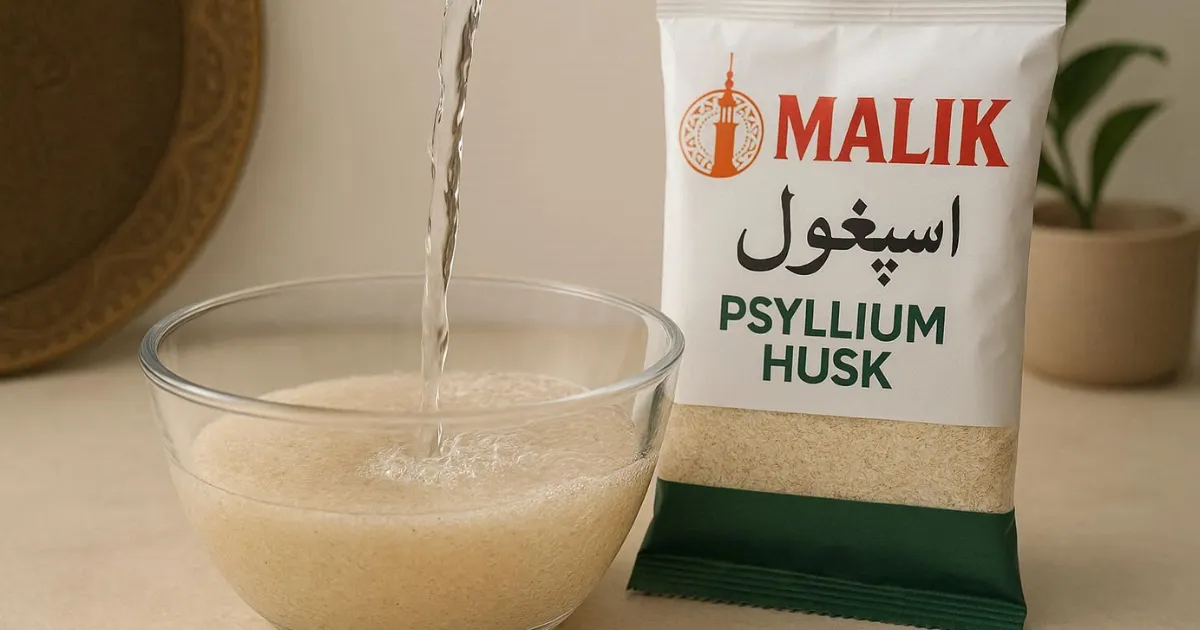
Psyllium Husk in Urdu: Complete Guide to اسپغول چھلکا Benefits & Uses – 2025
After three decades of cultivating and supplying psyllium across six
